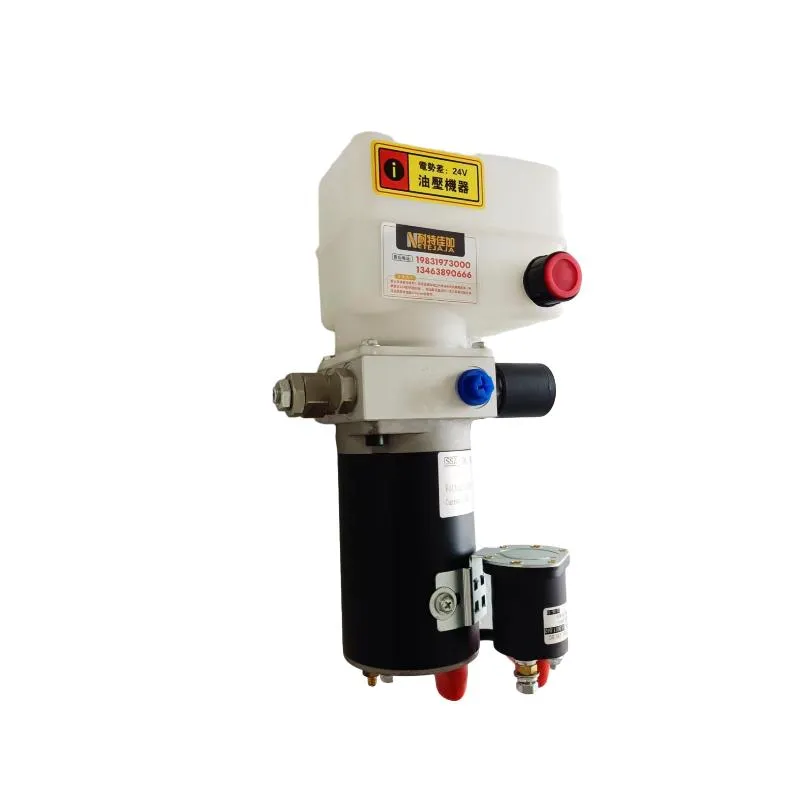Sep . 29, 2024 03:17 Back to list
Exploring Manufacturing Processes of Dual Action Hydraulic Cylinder Factories
Understanding Dual Action Hydraulic Cylinder Factories
Dual action hydraulic cylinders are essential components in various industrial applications, providing the versatile movement needed to power machinery and equipment. These cylinders operate using hydraulic pressure to perform work in two directions extending and retracting. As industries increasingly rely on automation and hydraulic systems, the demand for high-quality dual action hydraulic cylinders has surged, leading to the establishment of specialized manufacturing facilities. In this article, we will explore the role and significance of dual action hydraulic cylinder factories, along with the processes involved in their production.
The Importance of Dual Action Hydraulic Cylinders
Dual action hydraulic cylinders, often referred to as double-acting cylinders, differ from single-acting models by utilizing hydraulic fluid to control both the extension and retraction of the piston. This design allows for greater efficiency and control, making them ideal for applications that require precise movements. Industries such as construction, manufacturing, automotive, and agriculture heavily depend on these cylinders to power machinery such as excavators, forklifts, and presses.
One key advantage of dual action cylinders is their ability to generate force in both directions. This characteristic allows machinery to perform complex tasks more effectively, reducing cycle times and increasing productivity. As the need for efficiency and automation grows, dual action hydraulic cylinder factories are crucial in meeting these demands.
Production Processes in Hydraulic Cylinder Factories
Dual action hydraulic cylinder factories utilize a range of sophisticated manufacturing processes to produce quality cylinders. Here are the key steps typically involved in their production
1. Design and Engineering The production process begins with the design phase, where engineers develop specifications based on the intended application. Advanced computer-aided design (CAD) software is used to create detailed models of the cylinders, ensuring that they meet performance and safety standards.
2. Material Selection High-quality materials are essential for the durability and performance of hydraulic cylinders. Factories typically use special steels and alloys that can withstand high pressure and resist corrosion. Material selection is critical, as it directly affects the lifespan and efficiency of the cylinders.
dual action hydraulic cylinder factories

3. Machining The machining process involves shaping the raw materials into the necessary components of the hydraulic cylinders. This stage includes processes such as turning, milling, and grinding. Precision is vital, as any discrepancies can lead to leaks and malfunctions during operation.
4. Assembly Once the components are machined, they are assembled into complete hydraulic cylinders. This step often requires a combination of manual labor and automated machinery to ensure that each cylinder is assembled correctly and to specifications.
5. Testing Quality control is paramount in hydraulic cylinder manufacturing. Factories conduct rigorous testing to ensure that each cylinder meets performance standards and can handle the required pressures without leaking. Testing may involve pressurization tests, leak tests, and performance evaluations.
6. Finishing After the testing phase, cylinders undergo finishing processes such as painting or coating to enhance corrosion resistance and improve aesthetics. These finishes also serve to protect the cylinders from the elements, ensuring longevity in demanding environments.
7. Packaging and Distribution Once the dual action hydraulic cylinders have passed all quality checks, they are carefully packaged and prepared for distribution to customers. This stage includes creating documentation that outlines technical specifications, safety guidelines, and maintenance instructions.
The Future of Hydraulic Cylinder Manufacturing
As technology evolves, dual action hydraulic cylinder factories are likely to incorporate more automation and advanced manufacturing techniques. Innovations such as 3D printing and the use of smart materials may enhance the functionality and efficiency of hydraulic cylinders, enabling manufacturers to produce even more sophisticated products. Additionally, the growing emphasis on sustainability will drive factories to adopt eco-friendly practices, from material sourcing to waste management.
In conclusion, dual action hydraulic cylinder factories play a vital role in modern industry, providing essential components that power machinery across diverse sectors. The combination of advanced design, precision manufacturing, and rigorous quality control ensures that these cylinders perform reliably under demanding conditions. As industries continue to evolve, these factories will adapt, paving the way for innovations that enhance efficiency and sustainability in hydraulic systems.
-
Fork Lift Power Units - Hebei Shenghan | Efficiency, Reliability
NewsJul.13,2025
-
1.5-Ton Turbocharged Cylinder-Hebei Shenghan|Hydraulic Solution,Energy Efficiency
NewsJul.13,2025
-
Auto Hoist Power Units-Hebei Shenghan|Efficiency&Industrial Lifting
NewsJul.13,2025
-
Double Acting Power Units-Hebei Shenghan|Hydraulic Solutions,Industrial Efficiency
NewsJul.13,2025
-
1.5 Ton Lifting Cylinder 70/82-40-290-535 - High-Performance Hydraulic Solution | Hebei Shenghan
NewsJul.13,2025
-
Fork Lift Power Units - Hebei Shenghan | Efficiency&Reliability
NewsJul.13,2025
